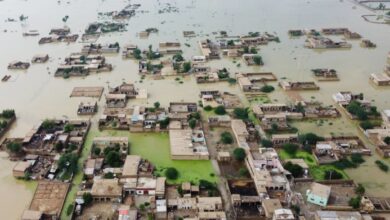floods
-
Trends

Devastation Unleashed: Earthquake and Flash Floods Ravage US in the Wake of Hurricane Hilary
Devastation Unleashed: Earthquake and Flash Floods Ravage US in the Wake of Hurricane Hilary In a heart-wrenching turn of events,…
Read More » -
Trends

Catastrophic Floods Devastate Northern China, Urgent Red Alert Issued
Catastrophic Floods Devastate Northern China, Urgent Red Alert Issued In an extremely severe disaster, a massive storm hit northern China,…
Read More » -
Trends

Top Weather Updates: Heavy’ Rainfall Alert in Multiple States; Flash-Flood Risk Persists in Himachal
Top Weather Updates: Heavy’ Rainfall Alert in Multiple States; Flash-Flood Risk Persists in Himachal The India Meteorological Department (IMD) has…
Read More » -
Trends

Climate Change, The Clock Is Ticking, And Time is Running Out; The Urgency of Addressing Climate Change
Climate change is an existential threat that demands immediate attention and action from humanity. With each passing day, the consequences…
Read More » -
Trends

Pakistani floods endanger food security by destroying crucial crops.
Large tracts of agricultural land have been damaged by flooding in dozens of districts in Pakistan’s Baluchistan, Sindh, and Punjab…
Read More » -
Trends

A social media outpouring on Bengaluru rains
A social media outpouring on Bengaluru rains Tweeple don’t mince words. When an overnight downpour led to a deluge like…
Read More » -
Economy

China’s exports dipping sharply again: tough recovery from the terrible pandemic
China Economy: One thing that every nation and individual around the world can agree upon is that Covid has been…
Read More »



